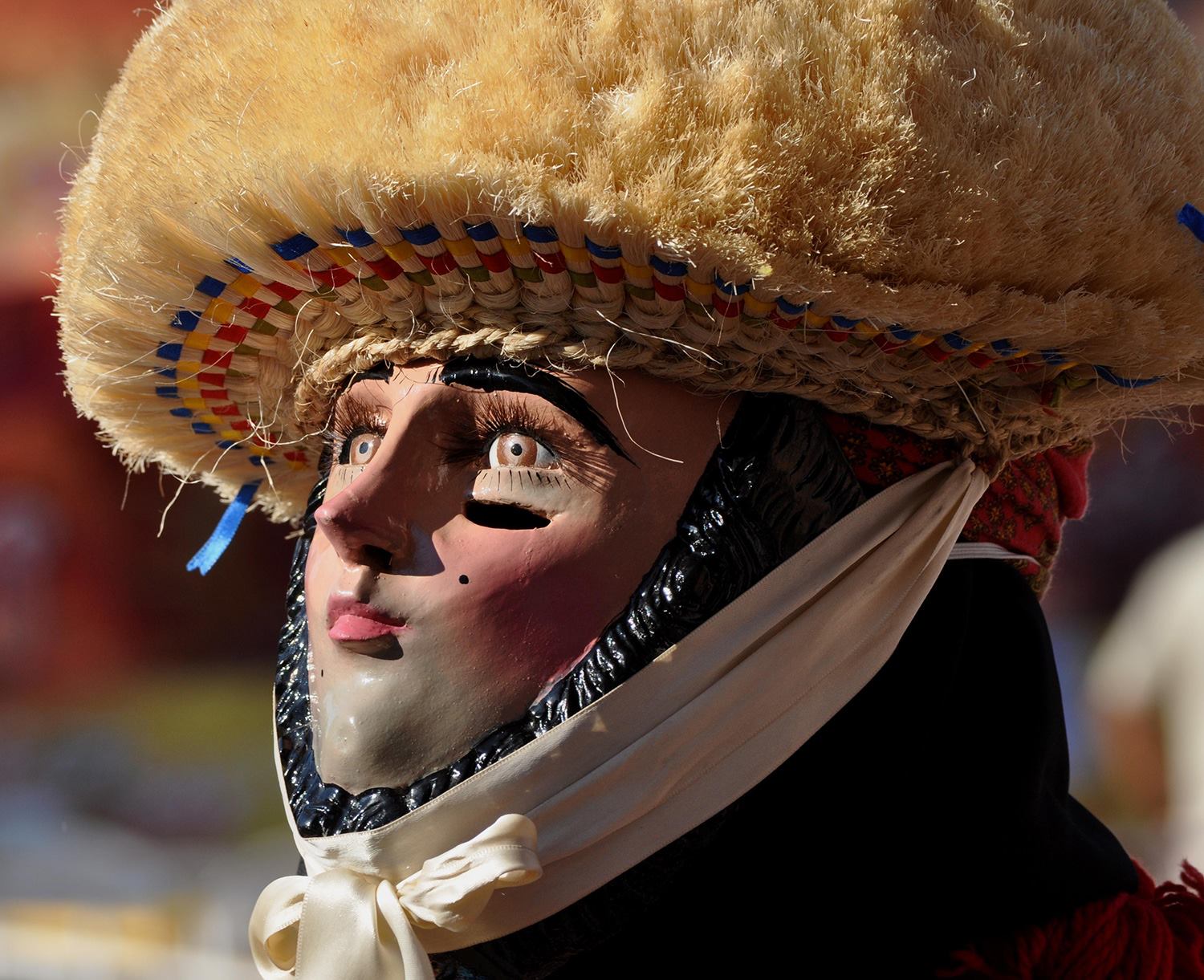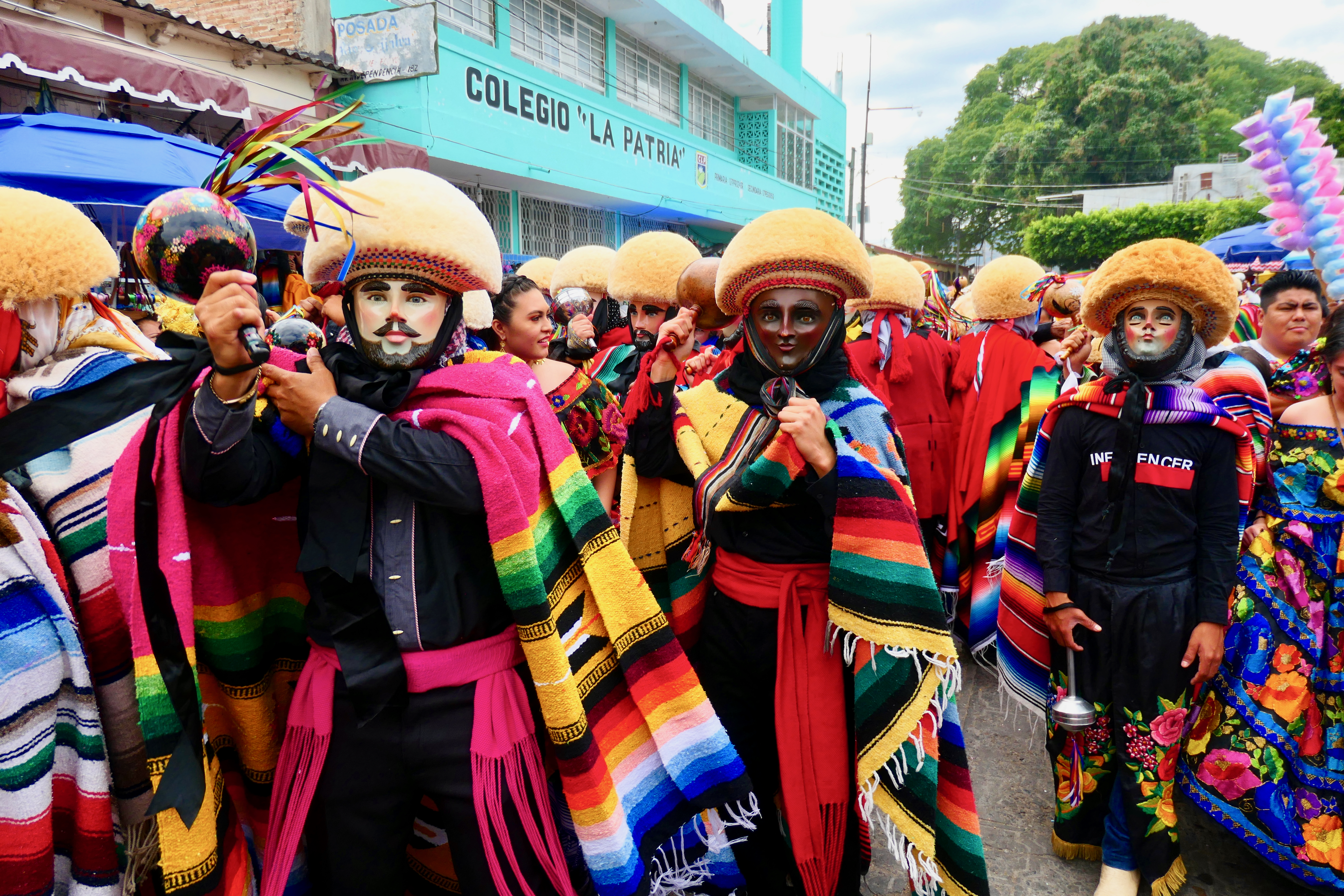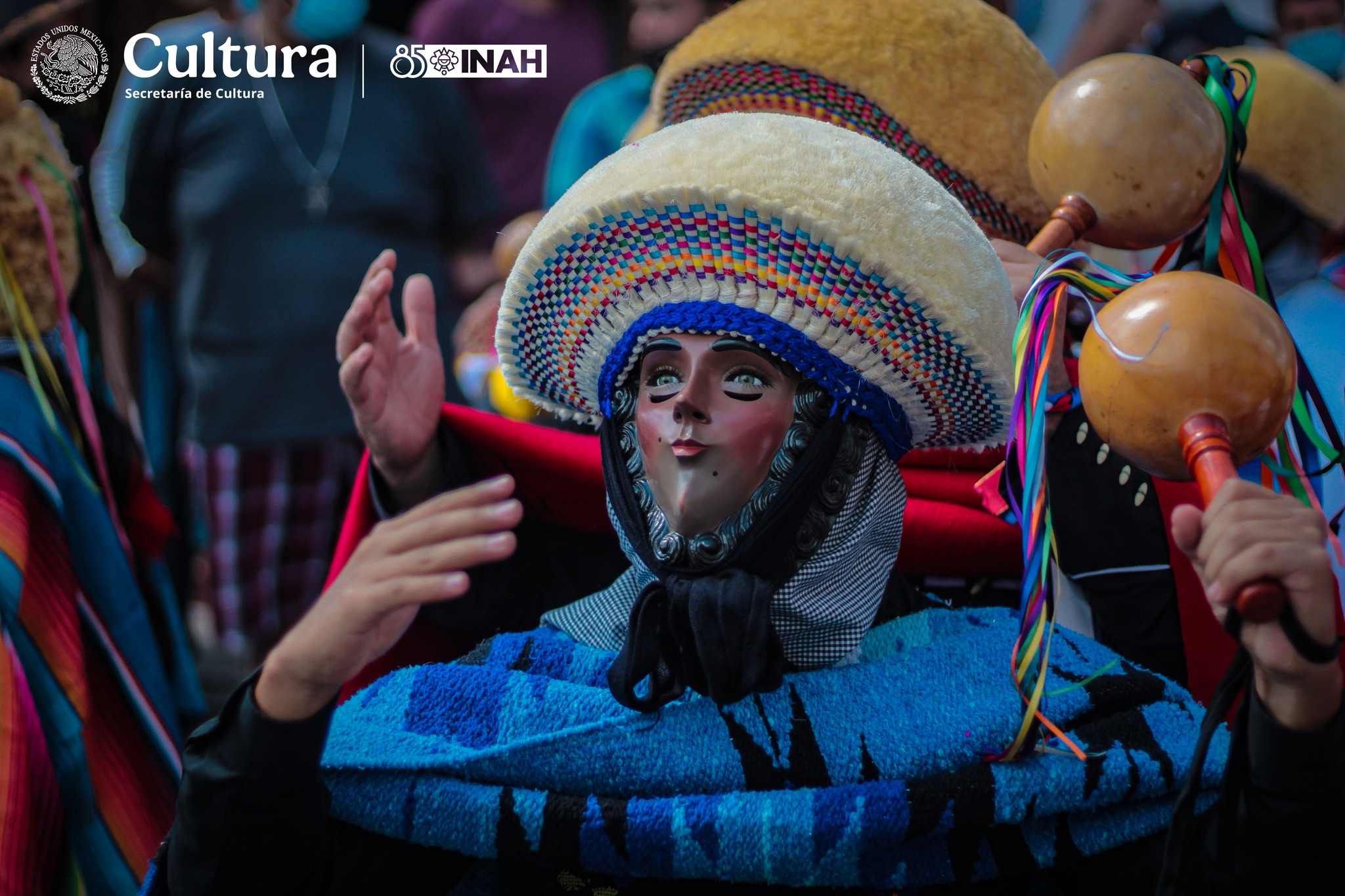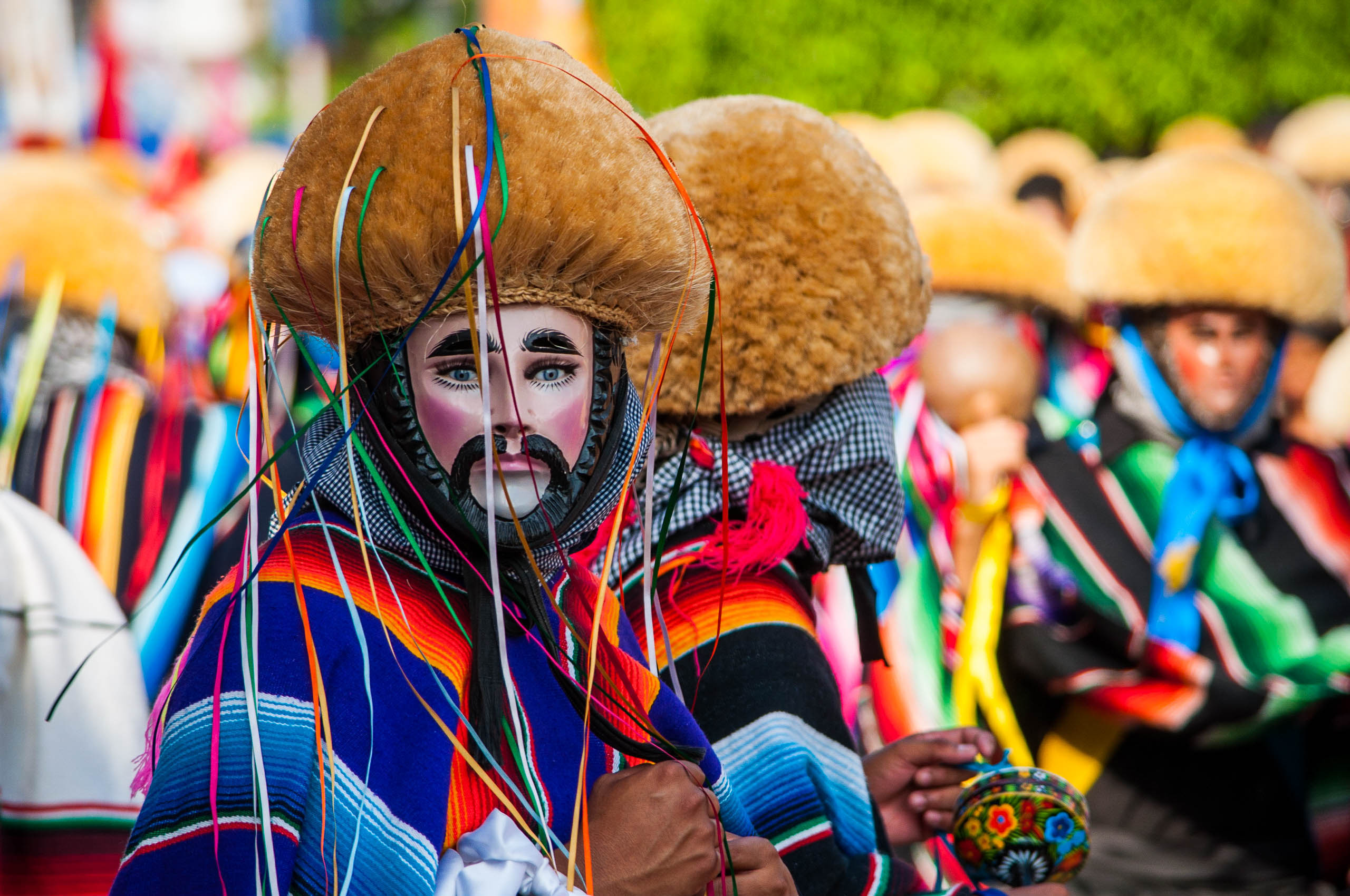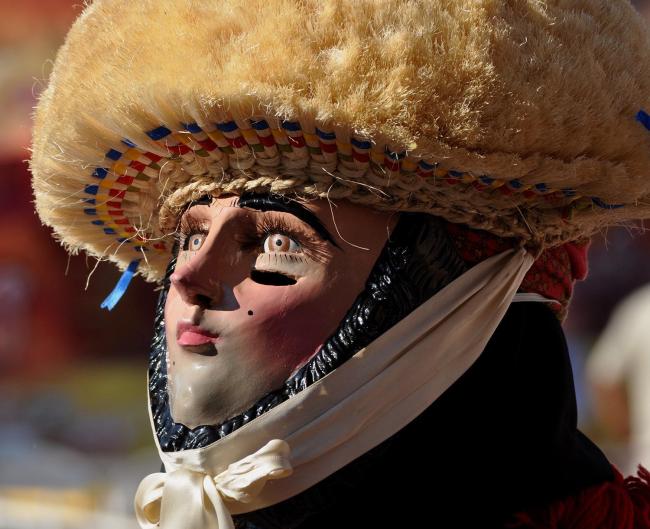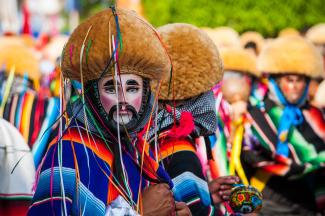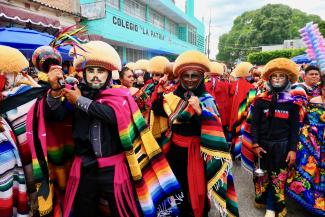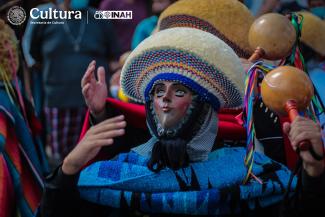Los parachicos en la fiesta tradicional de enero de Chiapa de Corzo
Los parachicos en la fiesta tradicional de enero de Chiapa de Corzo

World Heritage
Intangible
Usos sociales, rituales y actos festivos
Since the 18th century, the traditional Fiesta Grande de Chiapa de Corzo has been held every year from January 4 to 23 in the state of Chiapas. Music, dance, crafts, gastronomy, masses, and entertainment are all part of this festival in honor of Our Lord of Esquipulas, Saint Anthony the Abbot, and Saint Sebastian, with the latter being especially honored. The Parachicos (a term that refers both to the dancers and the type of dance they perform from morning to night) travel throughout the town carrying the honored images and visiting various places of worship. They are led by the Patron, the highest authority of the Parachicos, who wears a mask with a stern expression, carries a guitar and a whip, and plays the whistle accompanied by one or two drummers, while the rest of the Parachicos shake their rattles. During the dance, the Patron sings praises to which the Parachicos respond with cheers.
The traditional Fiesta Grande de Chiapa de Corzo takes place from January 4 to 23 each year in this Mexican town. Music, dance, crafts, gastronomy, and religious ceremonies are all part of this festival in honor of Our Lord of Esquipulas and two Catholic saints, Saint Anthony the Abbot and Saint Sebastian, the latter being especially honored. The dances of the parachicos—a term that refers both to the dancers and the type of dance they perform—are considered a collective offering to the venerated saints. The parachicos travel throughout the town carrying the honored images and visiting various places of worship. They are led by the Patrón, the highest authority of the parachicos, who wears a mask with a stern expression, carries a guitar and a whip, and plays the whistle accompanied by one or two drummers, while the rest of the parachicos shake their chinchines (maracas). During the dance, the Patrón sings praises to which the parachicos respond with cheers.
The carved wooden mask is the central element of the costume, along with a montera (headdress made of natural fiber), sarape, embroidered scarf, and chinchín (maraca). The dance, as well as the traditional craft techniques related to this cultural expression, are transmitted at the same time as they are performed; children participating in the festivities imitate the movements of adults.
The parachicos encompass all spheres of local life because they are integrated into the social organization and local material and symbolic exchanges; hence, the identity of the people of Chiapas is linked to their practice.
Declaratoria UNESCO

Patrimonio Intangible
Categioría Usos sociales, rituales y actos festivos
Fecha 2010
Criterios de valor Universal Excepcional
Este lugar cumple con los siguientes criterios de valor Universal Excepcional
R.1
El elemento es patrimonio cultural inmaterial, en el sentido del Artículo 2 de la Convención.
R.2
La inscripción del elemento contribuirá a dar a conocer el patrimonio cultural inmaterial, a lograr que se tome conciencia de su importancia y a propiciar el diálogo, poniendo así de manifiesto la diversidad cultural a escala mundial y dando testimonio de la creatividad humana.
R.3
Se elaboran medidas de salvaguardia que podrían proteger y promover el elemento.
R.4
La propuesta de inscripción del elemento se ha presentado con la participación más amplia posible de la comunidad, el grupo o, si procede, los individuos interesados y con su consentimiento libre, previo e informado.
R.5
El elemento figura en un inventario del patrimonio cultural inmaterial presente en el(los) territorio(s) del(los) Estado(s) Parte(s) solicitante(s), de conformidad con los artículos 11 y 12 de la Convención.

